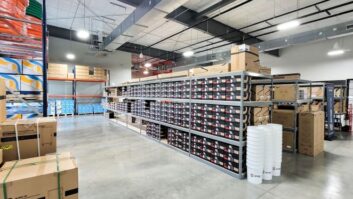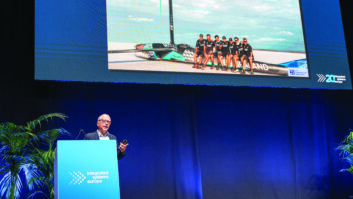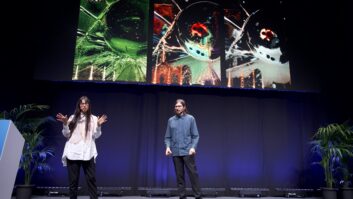No matter where you looked at the Consumer Electronics Show (CES), everything from TVs to smartphones, cameras to Blu-ray disc players and cars and even fridges was being connected to the Web.
Within four years, predicts the Consumer Electronics Association (CEA), more than 70% of all mainstream consumer electronics (CE) products will be hooked online. Among the hottest trends at the show was the development of ‘smart TVs’ with much the same functionality as app-powered smartphones including the ability to stream video, music and photo content from ‘the cloud’ of literally hundreds of online content suppliers.
To ram the point home Merwan Mereby, VP of corporate development at Panasonic declared that “2011 will be the breakthrough year for connected devices” and LG Electronics’ president Wayne Park stated that “2011 is all about smart product – smart TVs, smart mobiles and smart appliances.”
Take the humble Blu-ray Disc player. Introduced as a means to playback high-resolution packaged media, the latest versions offer connectivity for streaming content from an array of providers such as YouTube, Netflix, internet radio Pandora or even enabled for video calls from Skype.
The demand for connectivity is credited with helping the global market for CE products to hit an all-time high, with revenues topping $873 billion in 2010. Growth is predicted to top one trillion dollars worldwide by the end of 2011.
Previously at CES, appliance appearances were limited to low-key product demos by Whirlpool, an occasional internet-capable kitchen device and intermittent product displays by major CE exhibitors like LG. With the advent of ‘smart’ white goods and the show’s first dedicated Connected Home Appliances TechZone, however, appliances have a much higher profile at the show.
Advances in smart-grid technology – which allows appliances to modify energy consumption during peak periods by communicating with local utilities – as well as energy-efficient design, remote diagnostics and CE-influenced flourishes like touchscreen displays has helped bring appliances into greater alignment with electronics. “There’s a major convergence of technologies in electronics and appliances,” said Betsy Owens, vp of Sears’ private-label Kenmore brand.
Smartphone apps allow out-of-home contact with appliances, while appliances themselves are being fitted with an array of sensors including temperature gauges and lighting control.
Another nascent category is tablets and e-readers, sales of which are set to double from 25 million to 50 million this year. Over 100 examples were demonstrated at CES, though a fraction of those can be expected to be around this time next year. That’s partly due to the market dominance of Apple (which exhibits instead at MacWorld), and partly because the application for tablets has yet to be defined.
CE manufacturers like Sharp, Samsung, Panasonic and Sony got in on the act this year, linking tablets to the video delivery of content in and outside the house. Users of Samsung’s Galaxy tablet, for example, are able to remotely control and watch programming aired on Samsung TVs or Blu-ray players. Panasonic’s prototype Viera Connect tablet is designed to do something similar, while Sharp’s Galapagos uses a proprietary XDMF format which automatically adjusts digital content to the size of the screen.
It is internet-connected TVs, however, which took centre stage – with around 150m of them predicted to be sold worldwide by 2014 (iSuppli). After decades of defining TV as a device that is a receiver with limited broadcast content, the TV is viewed as the hub for a connected home environment encompassing smartphones, PCs and tablets – all joined by high-speed Wi-Fi or 4G LTE (Long Term Evolution), the new benchmark in mobile phone broadband.
www.ces.org







